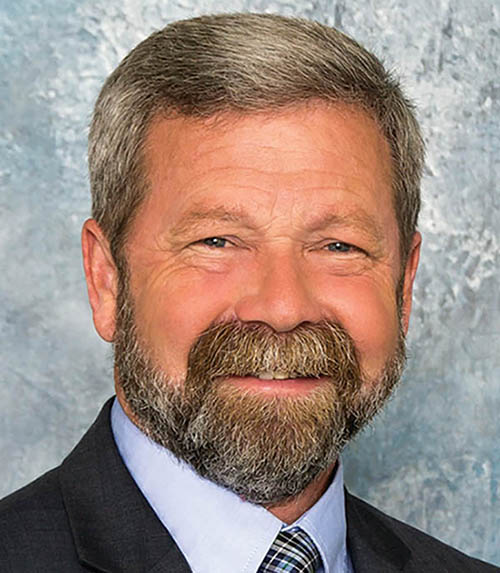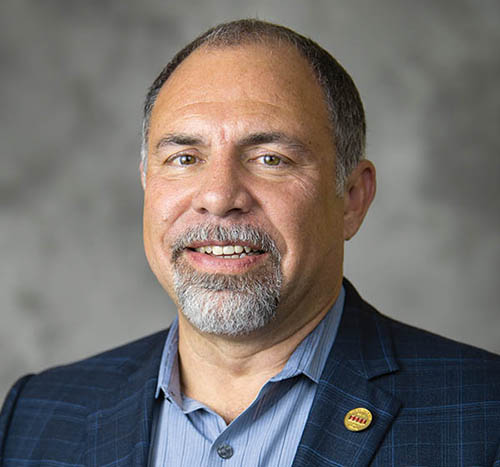Clay Koplin

CEO Cordova Electric Cooperative, Cordova, Alaska
Size: 1,632 meters
At Cordova Electric Cooperative, we always try to get the best use and value of what we already have. For employees, that is training and development. For keeping the lights on, it is a blend of old and new. Our most recent technology upgrade was installation of a battery energy storage system (BESS). The base use case is very compelling: using a BESS to provide frequency control and spinning reserve in a microgrid to liberate the renewables that were performing those tasks to reduce diesel plant run hours and fuel use. But we’re not stopping there. We are already demonstrating it can be used for system power factor balancing and are assessing pre-energization of transmission lines, inducing control signals on the grid, emergency backup power for our hospital and other use cases. What’s next for the CEC BESS? Improving grid resilience by operating it as the prime mover to maintain a portion of the grid during cataclysmic events like the volcanoes, tsunamis, avalanches, earthquakes and hurricane-force storms that we have experienced over the years, and developing a case for solar+BESS or tidal+BESS as a new platform for levelized microgrid power in remote and challenging locations.
Kevin Short

CEO Anza Electric Cooperative, Anza, California
Size: 6,174 meters
At Anza Electric, one of our biggest operational challenges occurs every year during wildfire season. As a single radial fed system, we face the possibility of extended outages, either due to the fires themselves or intentional shutdowns to prevent wind-related fires. In 2020, we deployed a 2-megawatt battery microgrid system that enables us to keep our small business area up and running during these events. This year, we are expanding that system with an additional 2.5 MW of battery storage. By leveraging this islanded microgrid capability with our 4.4 MW of on-system solar generation, we can assist our members by powering up the essential services our local businesses provide during these events. Our local storage and generation assets will also help us reduce peak demand on our import-constrained transmission system, provide voltage and frequency support during heavy load events, and provide a hedge against high market costs with a strategic arbitrage plan. These technologies are appropriate for us due to our increasing loads, difficult-to-build transmission lines, and the potential loss of service during extreme weather events. We are grateful to our board and our G&T for their forward thinking by enabling this project.
Mike Keyser

CEO BARC Electric Cooperative, Millboro, Virginia
Size: 12,800 meters
In less than four years, we will have deployed fiber-to-the-home (FTTH) to our entire electric service area, meaning that every member will have the opportunity to receive both electric and broadband service from BARC. As a result of this, I foresee the convergence of our fiber network and our electric system driving many of our major investments in technology going forward. Without a doubt, the most important of these is replacing our hybrid PLC/RF metering system with an IP-based system that utilizes our FTTH network to communicate. A fiber-based metering architecture positions BARC to quickly adapt both its distribution facilities and rate structures to changes in the way our members choose to produce and consume electricity. Whether it is rooftop or community solar, electric vehicle charging, battery storage, TOU rates, a DSO model or something yet to be invented, we want to be in a position to facilitate the wants and needs of our members, ensuring both system reliability and cost recovery for BARC.
David Callis

Executive Vice President and General Manager Tennessee Electric Cooperative Association, Nashville, Tennessee
Size: Statewide
The most effective measure of success for a co-op must be the quality of service it provides to its members. For a statewide like TECA, our members are the 25 utilities investing in our trade association. Data is powerful. It empowers organizations to make better decisions. Unfortunately, as the volume of data you manage grows, it becomes increasingly difficult to efficiently interpret and act on the information you have. At TECA, our data includes contact information, conference attendance records, education credits and Youth Tour delegate information. Simple as it may be, when you try to decipher multiple years’ worth of data living in various spreadsheets or in databases only accessible by certain team members, the task quickly becomes frustrating. The next technology upgrade for TECA will be an association management tool to help our team better manage and act on the data that we have. By compiling all of our information into a single, cloud-based platform, we believe we can better communicate the right things to the right people at the right time. This is a small but effective step we are taking to help us better serve our members—a goal we all have in common.
